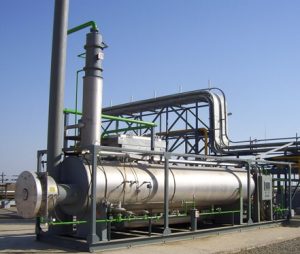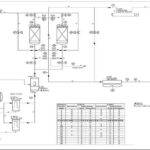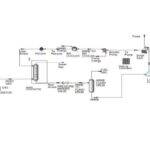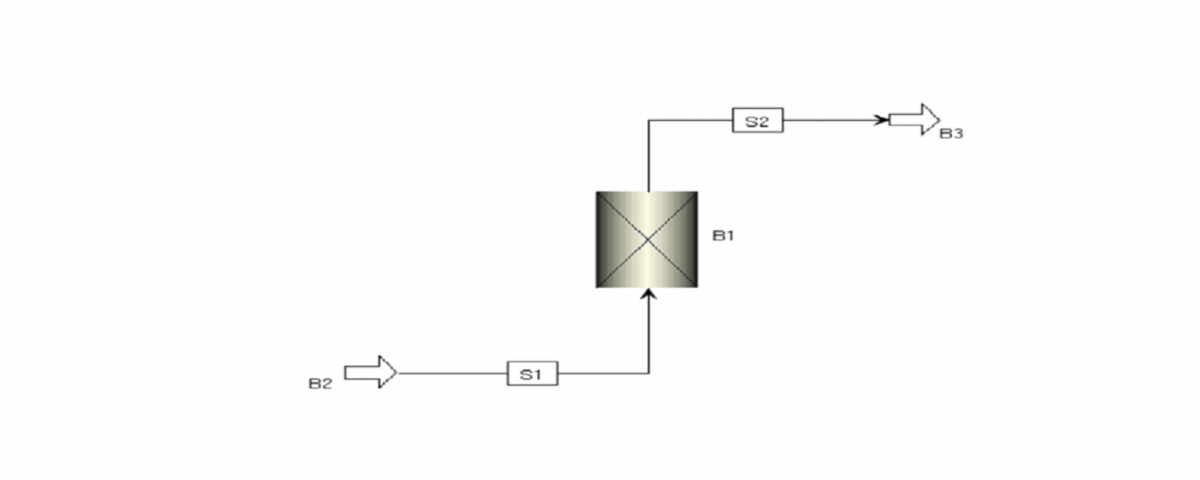Introduction
Natural gas dehydration is the process of removing water that exists in the form of vapor alongside natural gas. It has been established in the gas industry that dehydration is essential to ensure optimal operation of gas transmission in pipelines. Dehydration prevents the formation of hydrates and reduces corrosion. Various types of raw natural gas, ranging from gas extracted from independent gas wells to natural gas separated from crude oil extraction, contain some amount of free water or water vapor. The presence of water alongside gas can lead to several undesirable factors. The figure below illustrates a natural gas dehydration unit.

Dehydration Process
The common type of dehydration is known as absorption, specifically glycol dehydration, where glycol serves as the main drying agent. In this process, a drying liquid containing glycol is used to absorb water vapor from the gas stream. Typically, two glycol solutions are utilized, known as diethylene glycol (DEG) or triethylene glycol (TEG).
The molecular properties of glycol are quite similar to those of water. Therefore, when in contact with a stream of natural gas, it absorbs and collects the moisture present in the gas flow. The heavy glycol molecules are collected and removed from the contactor at the end of the contact region, while the dry natural gas is transferred out of the dehydrator from the other side.
The glycol solution is passed through a reboiler to evaporate the water dissolved in it, thus freeing the glycol for reuse in subsequent dehydration processes. This operation takes advantage of the physical phenomenon of the difference in boiling points, with water boiling at 212°F (100°C) and glycol at 400°F.
Simulation of Absorbent Beds in the Dehydration Unit of Bidboland Refinery
The simulation of the absorbent beds in the dehydration unit of BIDBOLAND Refinery begins with specialized software that allows for precise modeling of the behavior of absorbents and operational conditions. Initial data, including the physical and chemical properties of the absorbents, temperature, pressure, and flow rates of the input streams, is collected and entered into the software. By defining thermophysical and operational parameters, simulations are conducted to analyze the absorption and separation processes of water vapor and other impurities. The software employs advanced algorithms for simulating both dynamic and static processes to maximize result accuracy. Ultimately, through the analysis of simulation results and examination of the effects of various parameters on the performance of the absorbent beds, the design can be optimized and the efficiency of the dehydration unit can be improved. This process assists BIDBOLAND Refinery in enhancing the quality of the final product while reducing operational costs.
In this project, the simulation of the absorbent beds in the dehydration unit of BIDBOLAND Refinery has been carried out using Aspen Adsim software. The figure below shows a portion of the results.

Conclusion
The simulation of the absorbent beds in the dehydration unit of BIDBOLAND Refinery has been introduced as an effective tool for improving separation processes and enhancing the overall performance efficiency of this unit. The results obtained from the simulation indicate that the proper selection and design of absorbents can significantly reduce operational costs and improve the quality of the final product. Additionally, the optimization of process parameters such as temperature and pressure has a direct impact on the performance of the absorbent beds.
In this project, the simulation of the absorbent beds in the dehydration unit of BIDBOLAND Refinery has been conducted using Aspen Adsim software.


